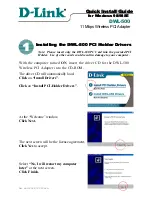
i-MARK 2 / i-MARK 3
USER
MANUAL
VISIBILITY DELIVERED.
PAGE 48 OF 55
In master mode the device will additionally transmit synchronization telegrams and this independently
on the operating mode it is configured in.
8.6.3
Synchronization Mechanism
Note: This setting is only of importance if several marker loops are in close proximity to each other.
The factory setting is that all time slots are used.
The synchronization mechanism goal is to avoid multiple position markers with overlapped transmit
area to transmit at the same time and disturb each other. For this task, all the devices must be
synchronized, and follow the synchronization mechanism described below.
The modules synchronization is done by having 1 master device (i-PORT 4, a position marker in
master mode or the host application) to broadcast on the bus a synchronization telegram on a regular
interval. Default configuration is, that a device sends in each of the 12 slots. The time is divided in 12
slots of 20 milliseconds each plus a pause of 10 ms. So a complete cycle of 12 slots has a total
duration of 250 milliseconds.
For each position marker the application must define in which slot the device will transmit the LF
telegram making sure that the devices will not disturb each other. If all markers are synchronized, the
slot sequences on all markers shall start at the same time.
8.6.4
Slot Configuration Examples
Configuration example with 2 position markers, none of them can transmit at the same
time.
Slot Number
1
2
3
4
5
6
7
8
9
10
11
12
Marker 1
T
T
T
T
T
T
Marker 2
T
T
T
T
T
T
Configuration example with 4 position markers, none of them can transmit at the same
time.
Slot number
1
2
3
4
5
6
7
8
9
10
11
12
Marker 1
T
T
T
Marker 2
T
T
T
Marker 3
T
T
T
Marker 4
T
T
T
Configuration with 8 position markers.
The cross table below defines which devices cannot transmit at the same time.
Slot
1
2
3
4
5
6
7
8








































